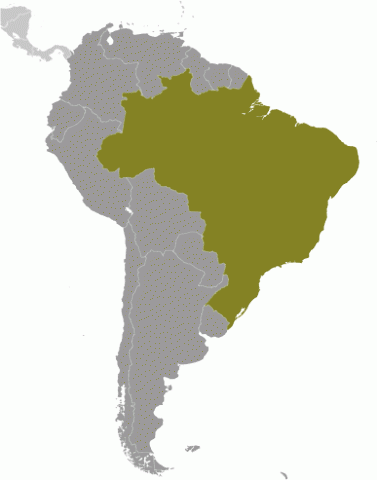Child Labor and Forced Labor Reports
Brazil


Moderate Advancement
In 2024, Brazil made moderate advancement in efforts to eliminate the worst forms of child labor. The government published two updates, in April and October, to the national "Dirty List," which contains data on employers that the Ministry of Labor and Employment finds to be using slave labor, including that of children, with the record addition of 424 new employers. In addition, the Ministry of Labor and Employment established the first permanent National Special Mobile Group to Combat Child Labor and approved the Updated Internal Regulations for the National Commission for the Eradication of Child Labor, including extending to the commission the capability to issue resolutions, recommendations, and public notes on child labor matters. The Special Group also removed a total of 472 children from situations of child labor during the reporting period. The government also published the Fourth National Plan to Combat Human Trafficking, which outlines the government's strategy to address human trafficking through five main priorities, including a focus on child trafficking. Lastly, several government agencies, along with the International Labor Organization, conducted a month-long national campaign in June to commemorate World Day against Child Labor. The campaign focused on giving visibility to children whose rights are violated by highlighting the various activities carried out by child laborers on a daily basis. Although the government made meaningful efforts in all relevant areas during the reporting period, its laws do not meet international standards on the prohibition of child trafficking because they require the use of threats, violence, coercion, fraud, or abuse to be established for the crime of child trafficking to have occurred. Furthermore, the reported number of labor inspectors is likely not sufficient to provide adequate coverage of the workforce, and local governments lack the capacity to fully implement and monitor the National Program to Eradicate Child Labor and other social protection programs.
| Children | Age | Percent and Population |
|---|---|---|
| Working | 5 to 14 | 2.1% (619,654) |
| Boys | 2.7% | |
| Girls | 1.5% | |
| Urban | 1.2% | |
| Rural | 7.2% | |
| Hazardous Work by Children | 15 to 17 | 2.4% (220,863) |
| Boys | 3.4% | |
| Girls | 1.4% | |
| Urban | 2.4% | |
| Rural | 2.8% | |
| Attending School | 5 to 14 | 98.6% |
| Combining Work and School | 7 to 14 | 2.5% |
| Sector/Industry | Activity |
|---|---|
| Agriculture | Production of bananas, cocoa, coffee, corn, cotton,† manioc, pineapples,† rice, sisal,† sugarcane,† and tobacco,† and the harvesting of açaí berries. Fishing. Raising cattle and livestock, including poultry, hogs, and sheep. Working in forestry, including logging, and producing charcoal. |
| Industry | Slaughtering animals,† including for beef production. Processing manioc flour† and cashews.† In the production of ceramics,† bricks,† and footwear. Construction† and work in stone quarries.† |
| Services | Street work,† as vendors,† beggars, car washers,† recycling† collectors, and garbage scavengers.† Working in supermarkets, markets, and fairs, including hauling fruits and vegetables and transporting heavy loads. Working in restaurants and other food and drink establishments, including delivering food by bicycle and selling alcoholic beverages. Working in cultural work, including artistic and sports-related activities. Domestic work,† including childcare, housekeeping, and eldercare. Maintaining and repairing automobiles. |
| Categorical Worst Forms of Child Labor‡ | Commercial sexual exploitation, sometimes as a result of human trafficking. Forced labor in agriculture, begging, and domestic work. Use by gangs to perform illicit activities, including drug trafficking, sometimes as a result of human trafficking. |
† Determined by national law or regulation as hazardous and, as such, relevant to Article 3(d) of ILO C. 182.
‡ Child labor understood as the worst forms of child labor per se under Article 3(a)–(c) of ILO C. 182.
Children at Higher Risk
Children from rural communities are particularly vulnerable to child labor. In remote rural areas, particularly in the north and northeast, children begin working in agriculture at an early age, including performing dangerous tasks. The high rate of poverty and extreme poverty in these regions makes children increasingly vulnerable to child labor. In addition, children in the states of Minas Gerais, Piauí, Santa Catarina, Bahia, and Rio are at higher risk for being subjected to commercial sexual exploitation. Child sex tourism is particularly common in tourist and coastal areas, but reports indicate that child trafficking for sexual exploitation occurs throughout the country.
Barriers to Education Access
Some schools, particularly those in rural areas, are overcrowded, have poor infrastructure, and lack basic resources and teachers. These barriers to education access may leave children vulnerable to child labor.
| Standard | Age | Meets International Standards | Legislation |
|---|---|---|---|
| Minimum Age for Work | 18 | ✓ | Articles 402 and 403 of the Labor Code |
| Minimum Age for Hazardous Work | 18 | ✓ | Article 2 of the Hazardous Work List |
| Identification of Hazardous Occupations or Activities Prohibited for Children | ✓ | Hazardous Work List | |
| Prohibition of Slavery, Debt Bondage, and Forced Labor | ✓ | Articles 149 and 149-A of the Penal Code; Article 13 of Law 13.344 amending Penal Code | |
| Prohibition of Child Trafficking | ✗ | Article 149-A of the Penal Code | |
| Prohibition of Commercial Sexual Exploitation of Children | ✓ | Articles 218-A, 218-B, 227, and 228 of the Penal Code; Articles 240, 241, and 244-A of the Child and Adolescent Statute | |
| Prohibition of Using Children in Illicit Activities | ✓ | Articles 33 and 40 of the National System of Public Policies on Drugs; Article 244-B of the Child and Adolescent Statute | |
| Minimum Age for Voluntary State Military Recruitment | 17 | ✓ | Articles 127 and 239 of the Military Service Regulation |
| Prohibition of Compulsory Recruitment of Children by (State) Military | ✓ | Article 5 of the Military Service Law | |
| Prohibition of Military Recruitment by Non-state Armed Groups | ✗ | ||
| Compulsory Education Age | 17 | ✓ | Article 4 of the National Education Law |
| Free Public Education | ✓ | Article 4 of the National Education Law |
The national "Dirty List" containing information on employers found to be using slave labor, including that of children, was updated in April 2024 with a record number of 248 new names, and updated again in October 2024 with an additional 176 new names. Employers and companies added to the list pay fines and unpaid labor taxes, are prevented from receiving any credit from government or private banks, and are kept on the list until they prove that they are making concerted efforts to clean up their supply chains. In 2024, the government introduced a second registry listing those employers which compensated workers, paid additional fees, and committed to monitoring their supply chains after being included on the “Dirty List” for committing slave labor offenses.
Brazil's laws prohibiting child trafficking do not meet international standards because they require the use of threats, violence, coercion, fraud, or abuse to be established for the crime of child trafficking to have taken place. Furthermore, the law requires children to attend school until age 17; while it also prohibits children under 18 from working at times and places that do not allow them to attend school, it does not limit the number of hours school-age children may engage or specify the work activities in which school-age children may work.
| Organization/Agency | Role & Activities |
|---|
| Ministry of Labor and Employment (MTE): Oversees the Secretariat of Labor Inspection, which is responsible for organizing, evaluating, and monitoring labor inspection activities, including those related to child labor and forced labor. Labor inspectors carry out actions outlined in the MTE's Normative Instruction No. 02 of 2021, including conducting unannounced inspections at sites where child labor is suspected, identifying and removing children from child labor situations, and issuing penalties. According to Decree 6.481, the MTE's Special Mobile Group to Combat Child Labor carries out inspections of greater technical and operational complexity, including in isolated geographical areas and with respect to cases classified as the worst forms of child labor. In addition, the Secretariat of Labor Inspection comprises 27 Regional Coordination of Child Labor Inspection bodies. In 2024, the first permanent National Special Mobile Group to Combat Child Labor was established. |
| Labor Prosecution Office (MPT): Prosecutes child labor and forced labor violations by working with prosecutors from the National Committee to Combat Child and Adolescent Labor, an in-house body that coordinates efforts to address child labor, collects fines for forced labor violations, and allocates funds for initiatives that address child labor and forced labor. |
| Overview of Enforcement Efforts | 2024 |
|---|---|
| Has a Labor Inspectorate | Yes |
| Able to Assess Civil Penalties | Yes |
| Routinely Conducted Worksite Inspections | Yes |
| Unannounced Inspections Permitted | Yes |
| Has a Complaint Mechanism | Yes |
| Imposed Penalties for Child Labor Violations | Yes |
| Conducted Criminal Investigations for Worst Forms of Child Labor Crimes | Unknown |
| Imposed Penalties for Worst Forms of Child Labor Crimes | Unknown |
In 2024, 1,865 labor inspectors conducted 135,935 worksite inspections, finding 2,754 child labor violations. The government also conducted criminal investigations into suspected cases of the worst forms of child labor, with an unknown number of prosecutions initiated and perpetrators convicted, as the government did not provide disaggregated information based on age.
| Coordinating Body | Role & Activities |
|---|
| National Commission for the Eradication of Child Labor: Led by the MTE and composed of government representatives, workers, employers, civil society, the justice system, and international organizations. The commission is responsible for the National Plan for the Prevention and Eradication of Child Labor and the Protection of Working Adolescents, research on child labor, and awareness-raising campaigns. During the reporting period, the MTE approved the new Internal Regulations for the National Commission for the Eradication of Child Labor, including important and unprecedented changes that allow the commission to issue resolutions, recommendations, and public notes on child labor matters. Additionally, in June 2024, the MTE, the National Forum for the Prevention and Eradication of Child Labor, the MPT, the ILO, and other government agencies participated in the workshop titled “Invisible Childhoods: Social Reflections and Institutional Practices." During the workshop, participants discussed strategies for tackling the worst forms of child labor. |
| Policy | Description & Activities |
|---|
| National Plan for the Prevention and Eradication of Child Labor and the Protection of Working Adolescents III (2019-2022): Led by the National Council for the Rights of Children and Adolescents (CONAETI), prioritized the prevention and eradication of child labor and the protection of adolescent workers by raising awareness of child labor and its worst forms, strengthening enforcement efforts, providing families with employment opportunities, increasing access to quality education, and establishing health support systems for child labor victims. In 2024, CONAETI drafted a new national plan with the aim of getting it approved in 2025. |
| National Plan to Combat Human Trafficking IV (2024–2028):* Outlines the government's strategy to address human trafficking through five main priorities: (1) amplifying and improving the efforts of stakeholders working on the prevention of human trafficking at the federal, state, district, and municipal levels; (2) facilitating coordination and cooperation among relevant stakeholders at the national, regional, and international levels; (3) boosting human trafficking prevention through the mitigation of vulnerability factors, including particular attention to the prevention of child trafficking; (4) strengthening protections and assistance to victims through programs and the training of involved stakeholders, including government and non-government entities; and (5) prosecuting more cases and ensuring that perpetrators are held accountable. The policy is coordinated and implemented by the Ministry of Justice and Public Security. |
| Federal Pact for the Eradication of Forced Labor: Aims to improve and strengthen coordination between federal entities in actions to eradicate slave labor. Each federal entity establishes a commission to combat slave labor and ensures its effectiveness through the preparation of plans, the development of data maintenance programs, and ongoing cooperation with the National Flow for Attending to Victims of Slave Labor. Led by the National Secretariat for Global Protection within the Ministry for Women, Family, and Human Rights and currently signed by 24 of the 27 states. During the reporting period, several states and municipalities renewed their commitment to the updated 2021 Pact. In addition, the first draft of III National Plan for the Eradication of Slave Labor was finalized. |
* Policy was approved during the reporting period.
† The government had other policies that may have addressed child labor issues or had an impact on child labor.
| Program | Description & Activities |
|---|
| National Program to Eradicate Child Labor (Programa de Erradicação do Trabalho Infantil [PETI]):‡ A nationwide social assistance program that addresses child labor through awareness-raising activities, victim identification and protection, and conditional cash transfers. To receive program benefits, family participants must ensure that children are not working and maintain at least 85 percent school attendance. In 2024, according to PETI's monitoring system, the state of Pernambuco ranked first place for actions to address child labor with 4,792 actions reported, including awareness-raising and active monitoring of street markets, festivals, and events, such as Carnaval. |
| Bolsa Família:‡ A Family and Fight against Hunger cash transfer program, overseen by the Ministry of Development and Social Assistance, assists families living in poverty and extreme poverty throughout the country. During the reporting period, 20.86 million families participated in the cash transfer program, with 24.86 million children between the ages 7 to 18 receiving additional monthly benefits of about $9 each, and 9.4 million children ages 0 to 6 receiving additional monthly benefits of $26 per child. The 2024, cash transfers totaled $29.2 million. |
| National Flow of Assistance to Victims of Slave Labor:‡ Creates an integrated network of social services providers and standardizes assistance to victims of slave labor, including child victims, across the country. Led by the Ministry for Women, Family, and Human Rights. In 2024, continued to provide specialized assistance to victims of slave labor through its social service network. |
‡ Program is funded by the Government of Brazil.
† The government had other social programs that may have included the goal of eliminating or preventing child labor.
| Area | Suggested Action |
|---|---|
| Legal Framework | Ensure that laws do not require the use of threats, violence, coercion, fraud, or abuse to establish the crime of child trafficking. |
| Criminally prohibit the recruitment of children under age 18 by non-state armed groups. | |
| Ensure that the light work provision prohibiting children under 18 from working at times and places that do not allow them to attend school also limits the hours school-age children may work and specifies the activities in which they may participate. | |
| Enforcement | Significantly increase the number of labor inspectors from 1,865 to 7,190 to ensure adequate coverage of the labor force of approximately 108 million workers. |
| Publish information related to criminal law enforcement efforts, such as the number of investigations conducted, prosecutions initiated, convictions obtained, and whether penalties were imposed for child labor crimes; ensure that relevant enforcement agencies coordinate their efforts to collect and share data on cases of child trafficking for sexual exploitation; and ensure that the data are disaggregated by victims’ ages. | |
| Hold perpetrators of child labor crimes accountable in accordance with the law. | |
| Social Programs | Remove barriers to education, including by ensuring an adequate number of trained teachers, building a sufficient number of schools, improving school infrastructure, and taking steps to enroll children in rural areas. |
| Provide funding to local governments so they can implement and monitor the National Program to Eradicate Child Labor. | |
| Provide adequate resources to state governments to ensure that child trafficking victims receive appropriate social services, and ensure the availability of specialized shelters for child victims of commercial sexual exploitation. | |
| Publish the results of the National Forced Labor Survey conducted in 2019. |



























